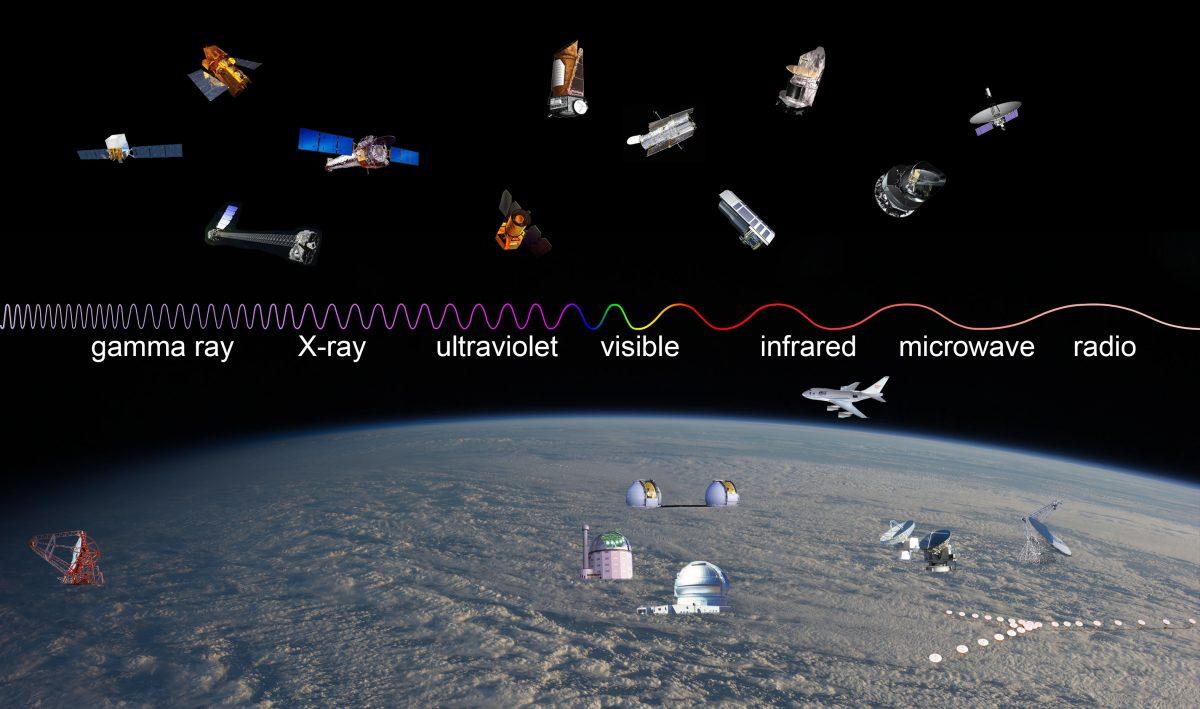 Examples of telescopes (operating in February 2013), operating at wavelengths across the entire electromagnetic spectrum. Observatories are located above or below that part of the spectrum that they usually observe.
Examples of telescopes (operating in February 2013), operating at wavelengths across the entire electromagnetic spectrum. Observatories are located above or below that part of the spectrum that they usually observe.When the Hubble Space Telescope was launched in 1990, with it we were going to take a whole car of measurements. We were going to see individual stars in distant galaxies that we had not seen before; measure the deep Universe as it didn’t work before; look into the regions of stellar formation and see the nebulae in unprecedented resolution; catch eruptions on the moons of Jupiter and Saturn in as much detail as it did not work previously. But the largest discoveries - dark energy, supermassive black holes, exoplanets, protoplanetary disks - have become unforeseen. Will this trend continue with the telescopes of James Webb and WFIRST? Our reader asks:
Without fantasies about some radically new physics, what results from Webb and WFIRST could surprise you the most?
To make such a prediction, we need to know what measurements these telescopes are capable of.
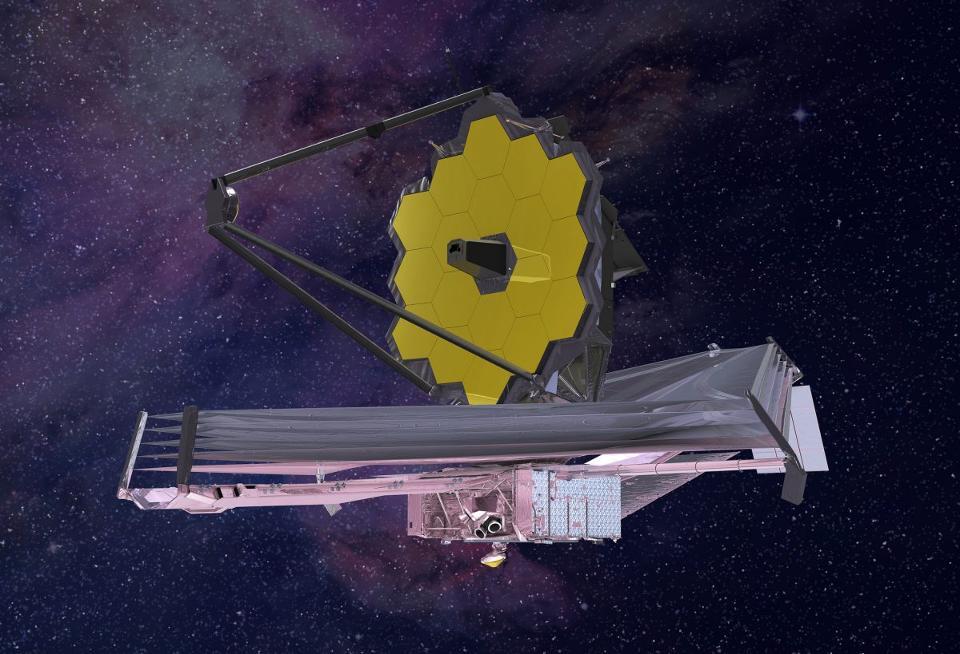 Completed and space telescope James Webb in the view of the artist. Pay attention to the five-layer protection of the telescope against solar heat
Completed and space telescope James Webb in the view of the artist. Pay attention to the five-layer protection of the telescope against solar heatJames Webb is a space telescope of a new generation, which will be launched in October 2018 [Since the writing of the original article, the launch date was moved to
March-June 2019 - approx. trans.]. After full commissioning and cooling, it will become the most powerful observatory in the history of mankind. Its diameter will be 6.5 m, the aperture will exceed Hubble seven times, and the resolution - almost three times. It will cover wavelengths from 550 to 30,000 nm - from visible light to infrared. He will be able to measure the colors and spectra of all the observed objects, bringing to the limit the benefits of virtually every photon that enters it. Its location in space will allow us to see everything within the range of its perceived spectrum, and not just those waves for which the atmosphere is partially transparent.
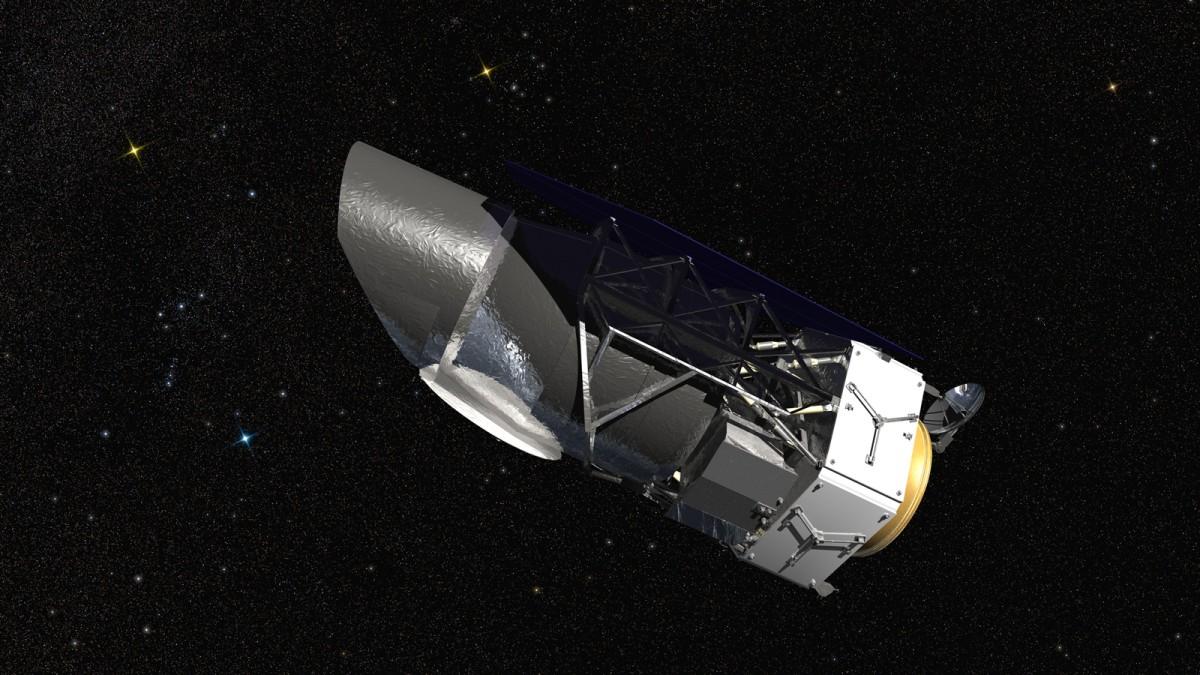 The concept of the satellite WFIRST, whose launch is scheduled for 2024. He will have to provide us with the most accurate measurements of dark energy and other incredible cosmic discoveries.
The concept of the satellite WFIRST, whose launch is scheduled for 2024. He will have to provide us with the most accurate measurements of dark energy and other incredible cosmic discoveries.WFIRST is the main mission of NASA for the 2020s, and at the moment its launch is scheduled for 2024th. The telescope will not be large, infrared, will not cover anything other than what Hubble cannot do. He will just do it better and faster. How much better? Hubble, studying a certain part of the sky, collects light from the entire field of view, and is able to photograph nebulae, planetary systems, galaxies, clusters of galaxies, simply collecting many images and stitching them together. WFIRST will do the same, but with a field of view 100 times larger. In other words, everything that Hubble can do, WFIRST can do 100 times faster. If we take the same observations that were made during the Hubble eXtreme Deep Field experiment, when Hubble watched the same piece of sky for 23 days and found 5500 galaxies there, then WFIRST would find more than half a million during this time.
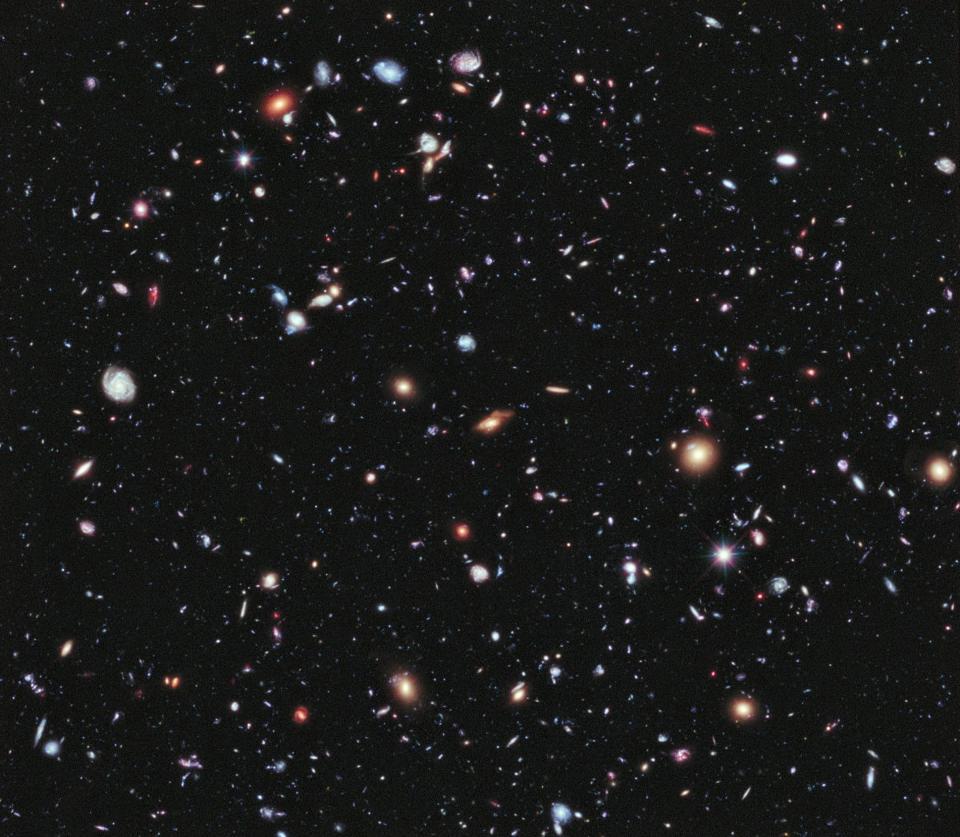 An image from the Hubble eXtreme Deep Field experiment, the deepest of our observations of the universe today
An image from the Hubble eXtreme Deep Field experiment, the deepest of our observations of the universe todayBut what interests us most of all is not those things that are known to us that we will discover with the help of these two beautiful observatories, but those about which we do not yet know anything! The main thing that is needed to wait for these discoveries is a good imagination, an idea of what we can still find, and an understanding of the technical sensitivity of these telescopes. In order for the Universe to revolutionize our thinking, it is not at all necessary that the information we open is radically different from those known to us. And here are seven candidates for what James Webb and WFIRST can discover!
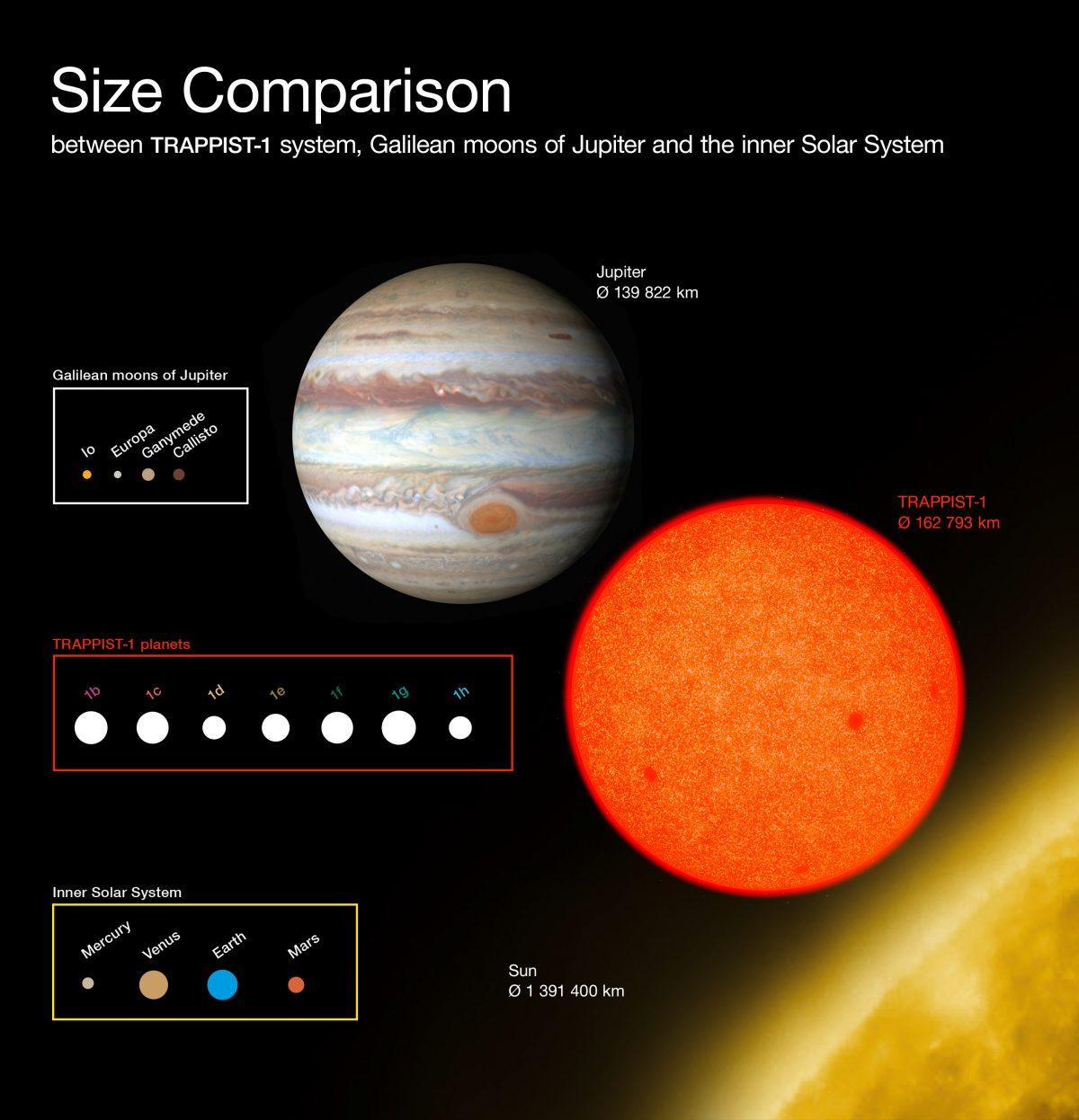 Comparison of the sizes of newly discovered planets orbiting the dull red star TRAPPIST-1 with the Galilean satellites of Jupiter and the inner Solar System. All the planets found in TRAPPIST-1 are similar in size to Earth, but the star is only about the size of Jupiter.
Comparison of the sizes of newly discovered planets orbiting the dull red star TRAPPIST-1 with the Galilean satellites of Jupiter and the inner Solar System. All the planets found in TRAPPIST-1 are similar in size to Earth, but the star is only about the size of Jupiter.1) The oxygen-rich atmosphere in a potentially habitable world of earth size. A year ago, the search for world-sized worlds in the habitable zones of sun-like stars was at its peak. But the discovery of Proxima b, and the seven world-sized worlds around TRAPPIST-1, world-sized worlds revolving around small red dwarfs, created a storm of sharp disagreements. If these worlds are inhabited, and if they have an atmosphere, then the relatively large size of the Earth compared to the size of their stars suggests that during transit we will be able to measure the content of their atmosphere! The absorbing effect of molecules — carbon dioxide, methane, and oxygen — can provide the first indirect evidence of life. James Webb will be able to see this, and the results can shake the world!
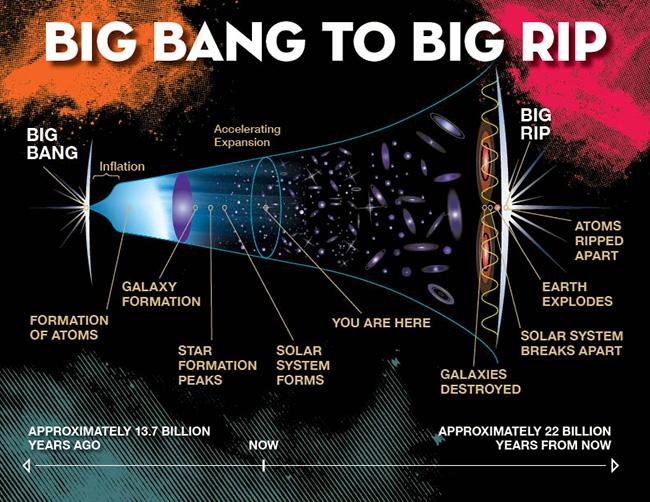 The Big Break scenario will break out if we find an increase in dark energy power over time.
The Big Break scenario will break out if we find an increase in dark energy power over time.2) Evidence of the impermanence of dark energy and the possible onset of the Big Break. One of the main scientific goals of WFIRST is to observe stars at very large distances in search of type Ia supernovae. These same events allowed us to discover dark energy, but instead of tens or hundreds, it will collect information about thousands of events located at great distances. And it will allow us to measure not only the rate of expansion of the Universe, but also the change of this speed over time, with an accuracy ten times higher than today's. If the dark energy is at least 1% different from the cosmological constant, we will find it. And if it is only 1% more in magnitude than the negative pressure of the cosmological constant, our Universe will end in a Big Break. This will surely come as a surprise, but we have one universe, and we should listen to what it is ready to tell about itself.
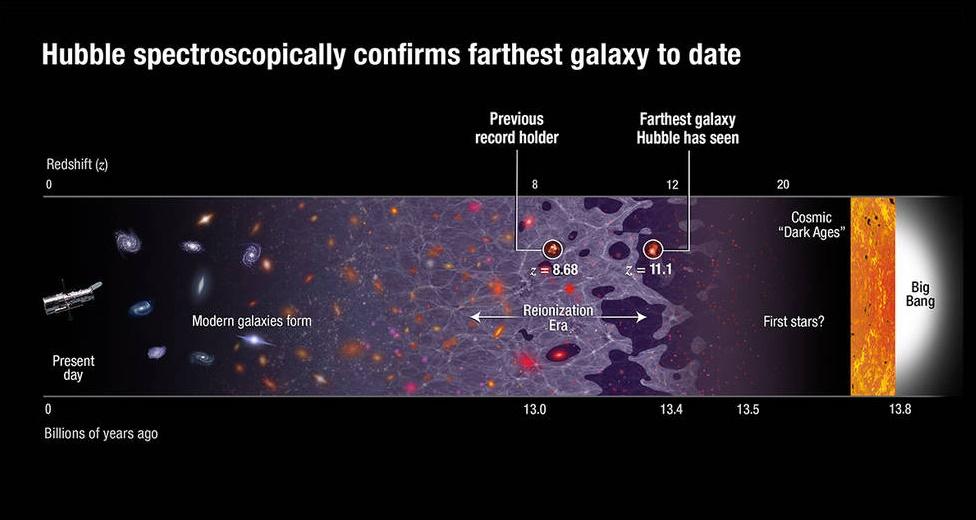 The most distant galaxy known so far, confirmed by Hubble by means of spectroscopy, is visible to us as it was when the universe was only 407 million years old.
The most distant galaxy known so far, confirmed by Hubble by means of spectroscopy, is visible to us as it was when the universe was only 407 million years old.3) Stars and galaxies from earlier times than predicted by our theories. With his infrared eyes, James Webb will be able to look into the past, when the Universe was 200-275 million years old - only 2% of its current age. This should capture most of the first galaxies and the late stage of the formation of the first stars, but we can find evidence that previous generations of stars and galaxies existed even earlier. If it turns out this way, it will mean that the gravitational growth from the time of the appearance of the CMB (380,000 years) before the formation of the first stars was somehow wrong. This will definitely be an interesting problem!
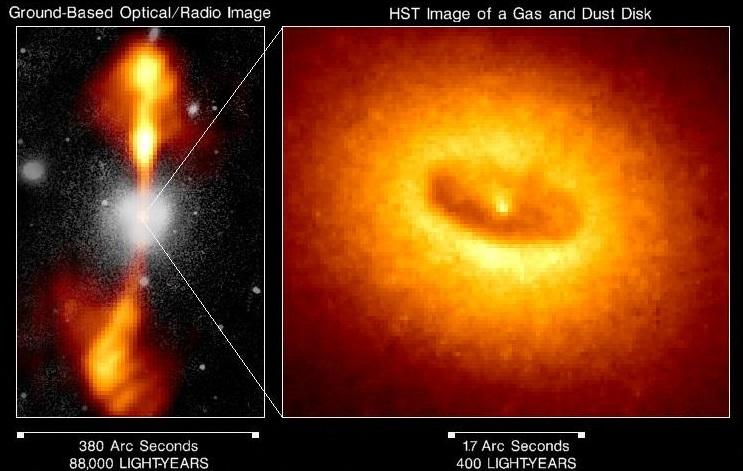 The core of the galaxy NGC 4261, as well as the nucleus of a huge number of galaxies, shows signs of the presence of a supermassive black hole, both in the infrared and in the X-rays
The core of the galaxy NGC 4261, as well as the nucleus of a huge number of galaxies, shows signs of the presence of a supermassive black hole, both in the infrared and in the X-rays4) Supermassive black holes that appeared before the first galaxies. To the most distant moments of the past, which we were able to measure, to those times when the universe was about a billion years old, galaxies contain supermassive black holes. The standard theory says that these black holes originated from the first generations of stars, merging together and falling into the center of clusters, and then accumulating matter and turning into supermassive BHs. The standard hope is to find confirmations of this pattern, and black holes that are in the early stages of growth, but it will be a surprise if we find them already fully formed in these very early galaxies. James Webb and WFIRST will be able to shed light on these objects, and finding them in any form will be a serious scientific breakthrough!
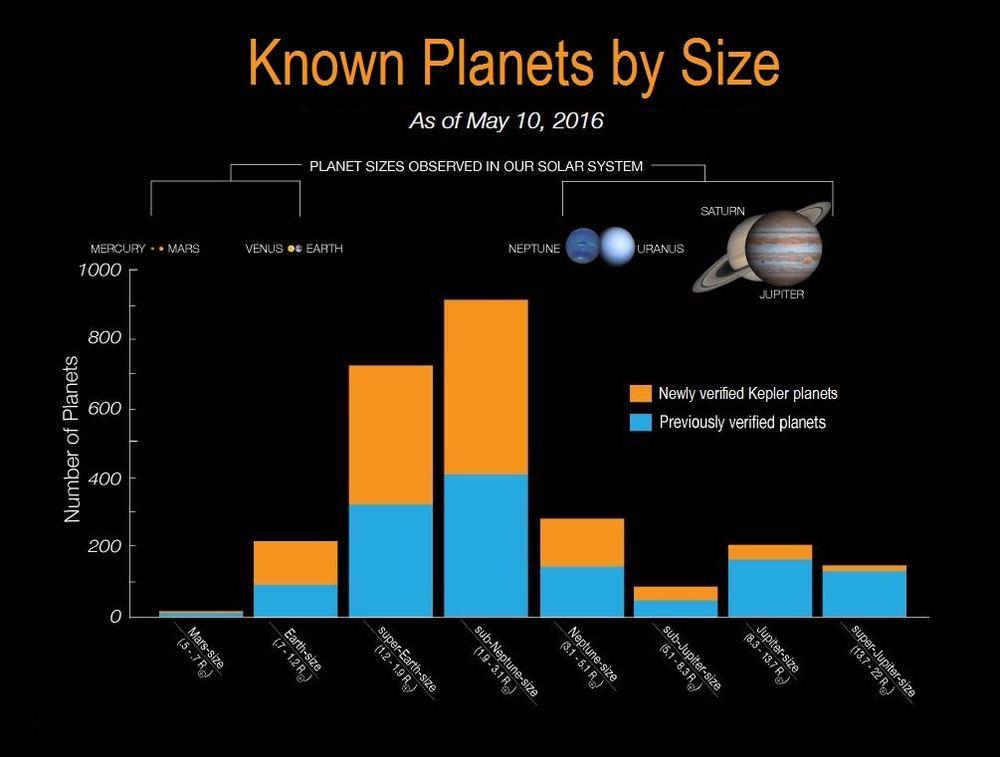 The planets discovered by Kepler, sorted by size, as of May 2016, when they released the largest sample of new exoplanets. Most often there are worlds slightly larger than the Earth and slightly smaller than Neptune, but the worlds of small mass may simply not be visible to Kepler.
The planets discovered by Kepler, sorted by size, as of May 2016, when they released the largest sample of new exoplanets. Most often there are worlds slightly larger than the Earth and slightly smaller than Neptune, but the worlds of small mass may simply not be visible to Kepler.5) Exoplanets of small mass, only 10% of the earth, can be the most common. This is a specialty WFIRST: search microlensing on large areas of the sky. When a star passes in front of another star, from our point of view, the curvature of space gives rise to an increasing effect, with a predictable increase and a subsequent decrease in brightness. The presence of the planets in the foreground system will change the light signal and allow us to recognize them with improved accuracy, recognizing masses smaller than any other method can do. With the help of WFIRST, we are probing all the planets up to a mass that makes up 10% of the Earth’s - the size of Mars. Are Mars-like worlds more common than Earth-like? WFIRST can help us figure it out!
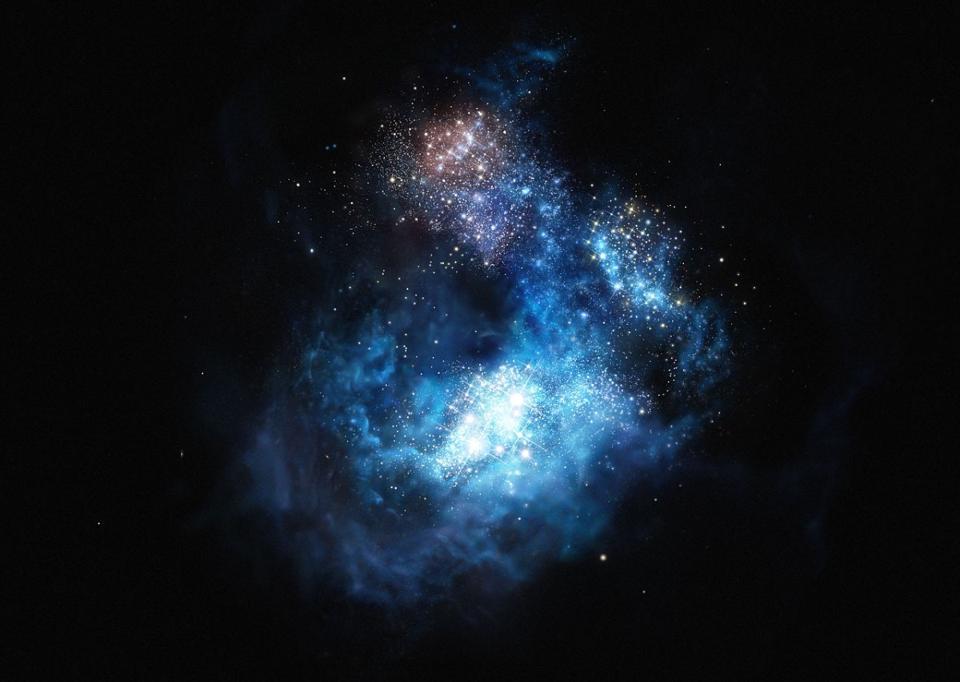 Illustration of CR7, the first of the detected galaxies containing stars of population III, is the first of the stars in the Universe. James webb can make a real photo of this and other such galaxies
Illustration of CR7, the first of the detected galaxies containing stars of population III, is the first of the stars in the Universe. James webb can make a real photo of this and other such galaxies6) The first stars may be more massive than those that exist now. Studying the first stars, we already know that they are very different from the current ones: they were almost 100% pure hydrogen and helium, with no other elements. But other elements play an important role in cooling, radiation and preventing the emergence of too large stars in the early stages. The largest star known today is in the
Tarantula Nebula, and its mass exceeds the Sun by 260 times. But in the early universe could meet the stars in 300, 500 and even 1000 times heavier than the sun! James Webb should give us the opportunity to find out, and can tell us something amazing about the earliest stars in the universe.
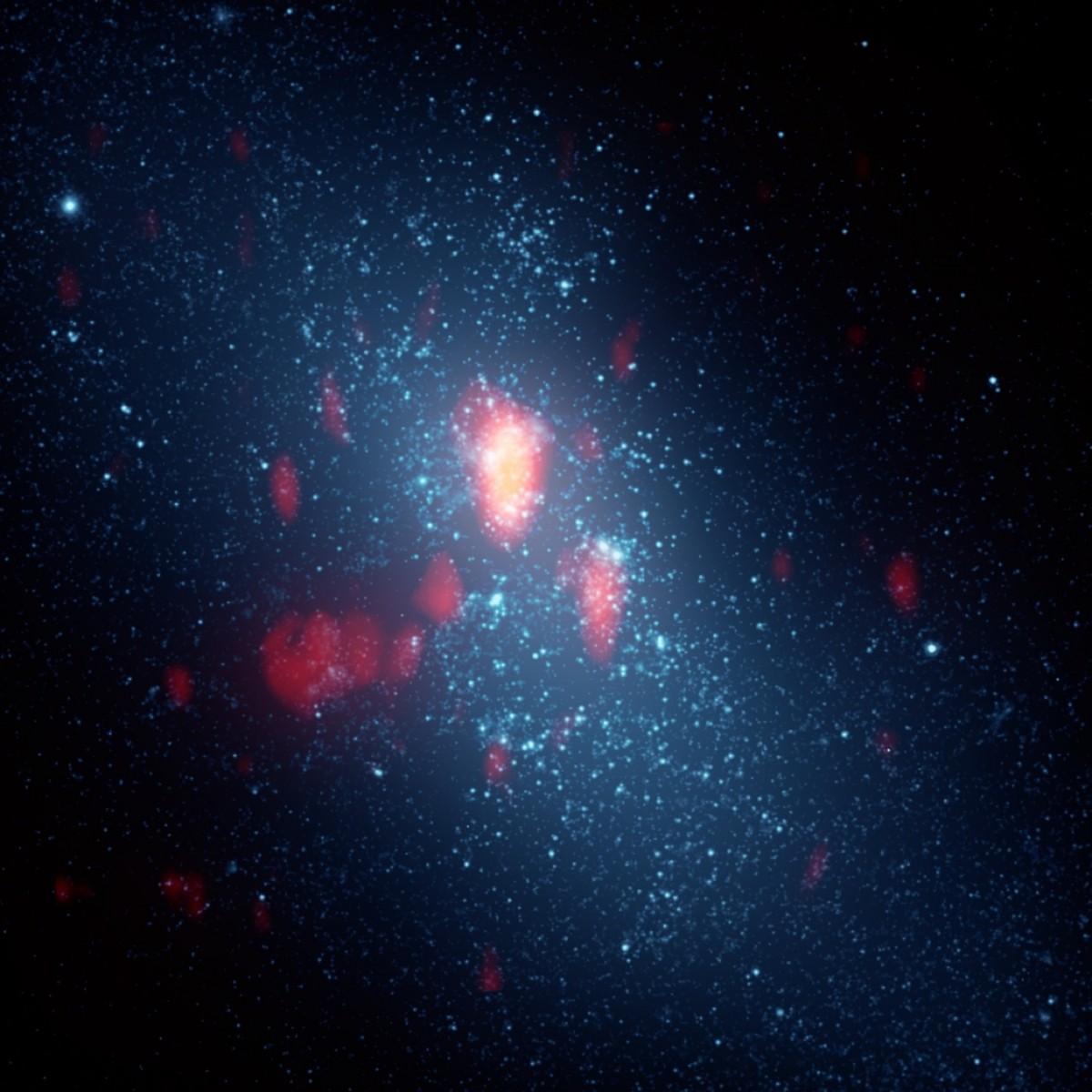 The outflow of gas in dwarf galaxies occurs during the active formation of stars, because of which ordinary matter flies away, and dark matter remains
The outflow of gas in dwarf galaxies occurs during the active formation of stars, because of which ordinary matter flies away, and dark matter remains7) Dark matter may not dominate so much in the first galaxies as in today's ones. We will probably finally be able to measure galaxies in remote parts of the Universe and determine whether the ratio of ordinary matter and darkness changes. With the intensive formation of new stars from the galaxy, ordinary matter flows away, unless the galaxy is very large - and therefore, in early, dim galaxies, there should be more normal matter in relation to dark than in dim galaxies located not far from us. Such an observation will confirm the current understanding of dark matter and hit the theories of modified gravity; opposite observation can refute the theory of dark matter. James Webb will be able to cope with this, but the accumulated statistics of observations of WFIRST will really clarify everything.
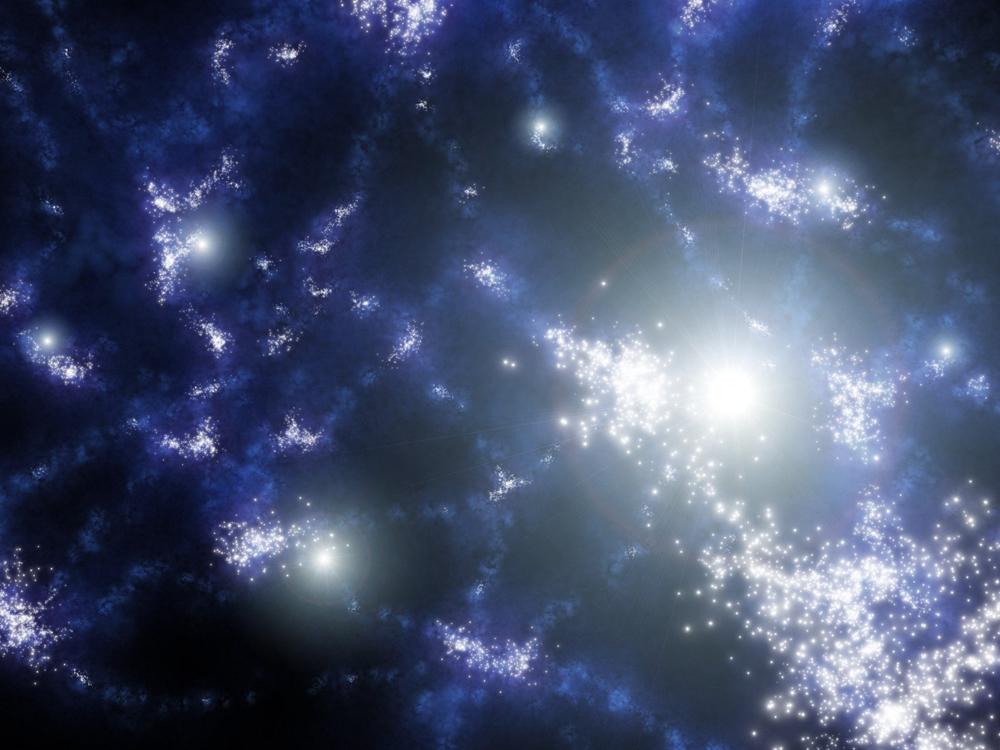 Representation of the artist on how the universe may look when forming the first stars
Representation of the artist on how the universe may look when forming the first starsAll this is only opportunities, and there are too many such opportunities to be listed here. The whole point of observations, accumulation of data and conducting scientific research is that we do not know how the universe works until we ask the right questions that will help us figure it out. James Webb will focus on four main issues: the first light and
reionization , the collection and growth of galaxies, the birth of stars and the formation of planets, as well as the search for planets and the origin of life. WFIRST will concentrate on dark energy, supernovae,
baryon acoustic oscillations , exoplanets - both with microlensing and direct observation, and on observing large areas of the sky in the near infrared range, which greatly exceed the capabilities of previous observatories like 2MASS and WISE.
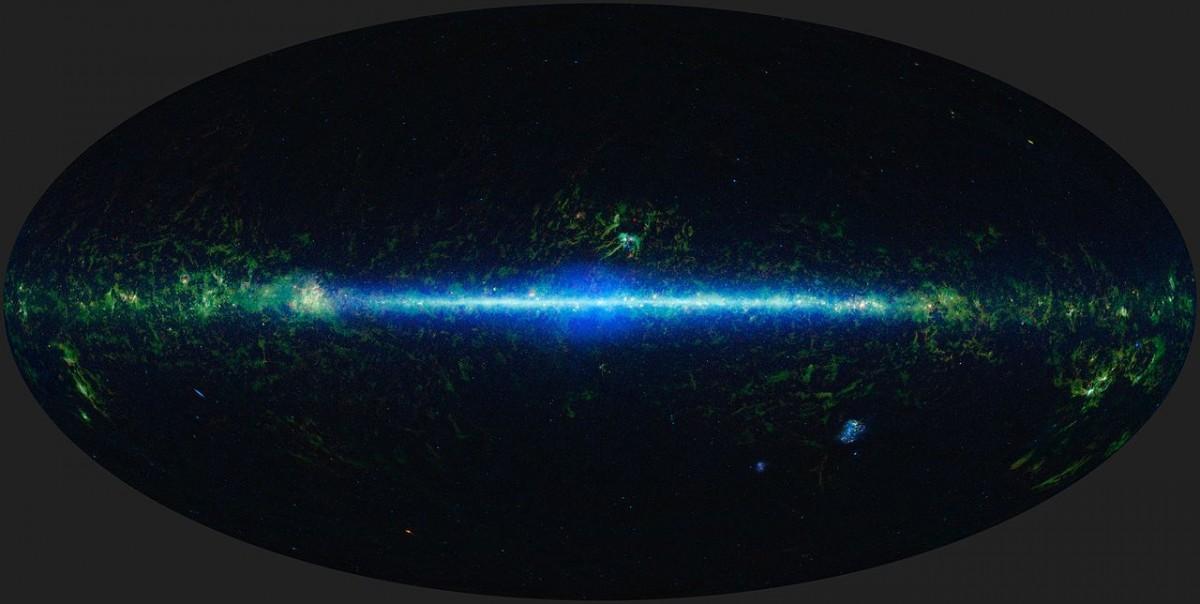 Infrared map of the entire sky, obtained by the spacecraft WISE. WFIRST will seriously surpass the spatial resolution and depth of field available for WISE, which will allow us to look deeper and further.
Infrared map of the entire sky, obtained by the spacecraft WISE. WFIRST will seriously surpass the spatial resolution and depth of field available for WISE, which will allow us to look deeper and further.We have an amazing understanding of today's Universe, but the questions that James Webb and WFIRST will receive the answers to are asked only today, based on what we have already studied. It may turn out that on all these fronts there will be no surprises, but it is more likely that we will not only discover surprises, but also that our guesses about their nature will be completely wrong. Part of scientific interest is that you never know when or how the Universe will surprise you by discovering something new. And when she does this, the greatest possibility of all advanced humanity comes: it allows us to learn something completely new, and changes the way we understand our physical reality.
Ethan Siegel - astrophysicist, popularizer of science, blog Starts With A Bang! He wrote the books Beyond The Galaxy , and Treknologiya: Star Trek Science [ Treknology ].